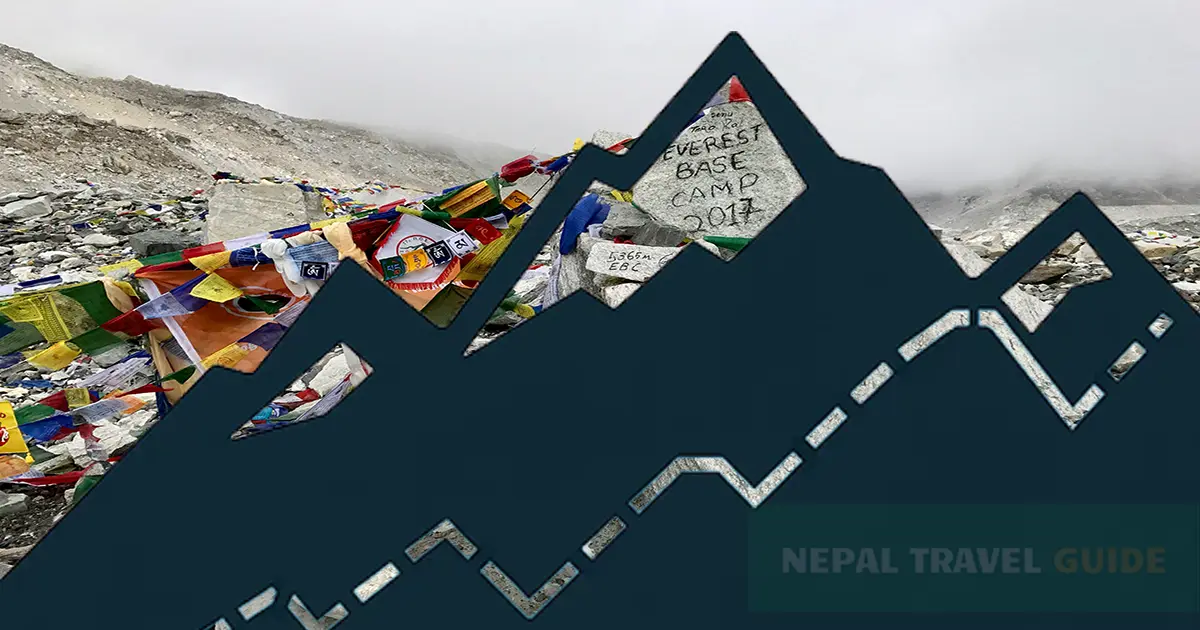Everest Base Camp Trek Difficulty Level: How Hard Is It Really?
The Everest Base Camp Trek (EBC) is one of the most iconic and sought-after treks in the world. But how difficult is it? While thousands complete it each year, it's far from a walk in the park. This guide offers a complete difficulty analysis—from altitude and terrain to fitness levels, acclimatization strategies, and mental readiness.
🏔️ Altitude: The #1 Challenge
The EBC trail rises from 2,800 m (Lukla) to 5,364 m (Base Camp). At that altitude, oxygen levels are roughly 50% of what you breathe at sea level. That's why Acute Mountain Sickness (AMS) is the biggest risk factor. Even fit hikers can experience symptoms like headaches, nausea, and insomnia.
Key to coping? Acclimatization days, slow pacing, and hydration. Our 14-day itinerary includes two acclimatization stops—in Namche Bazaar and Dingboche—to maximize your safety and success.
⛰️ Terrain Difficulty: Steep, Rocky, and Stunning
Although no technical climbing is required, the EBC trail is demanding. Expect rocky paths, steep uphill sections, glacial moraine crossings, and narrow ridgelines. Daily ascents can exceed 500–600 meters with 5–7 hours of walking—often at high altitude.
💪 Required Fitness Level
You don't need to be an athlete, but solid cardiovascular fitness is essential. Train with long hikes, stair climbs, and loaded backpack walks for 3–4 months before departure. Core and leg strength will help with daily endurance and balance.
Our beginner’s EBC guide offers detailed training plans and gear checklists.
🧠 Mental & Emotional Preparation
The trek is just as much a mental challenge as physical. You'll need patience, resilience, and the ability to adapt to discomfort, unexpected weather, or minor illness. Many trekkers say their mindset was the real difference between success and turning back.
📅 Weather & Seasonal Variability
Difficulty varies by season. Spring (Mar–May) and Autumn (Sep–Nov) are ideal for stable weather and clear skies. Winter treks are colder and riskier due to snow and icy trails, while monsoon months (Jun–Aug) bring landslides and leeches.
⏱️ Itinerary Duration & Pacing
The standard 12–14 day trek includes acclimatization. Compressing the itinerary increases risk of AMS and burnout. Slower treks are safer, more enjoyable, and boost your chances of reaching base camp comfortably.
🩺 Risk Mitigation & Safety Tips
- Follow the golden rule: “Climb high, sleep low.”
- Watch for AMS signs and never ignore symptoms.
- Stay hydrated and avoid alcohol above 3,000 m.
- Consider carrying Diamox (consult your doctor).
- Buy insurance that covers helicopter evacuation.
✅ Verdict: Is It Worth the Challenge?
Yes—and then some. With the right pacing, prep, and mindset, the Everest Base Camp Trek is achievable for most people in good health. The views, culture, and sense of achievement are unmatched.
Ready to plan your adventure? Speak to our experts to build a custom itinerary or join a small guided group with experienced Sherpa support.
